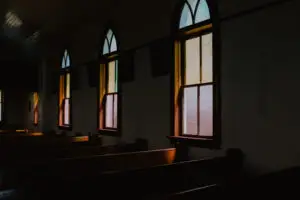A few years ago our family was visiting a church on the first Sunday of December. The pastor stood up and announced, “Tonight, we will have the hanging of the greens.” I leaned over to my wife and whispered, “I don’t know what the Greens did but it must have been really serious if the punishment is hanging!” I was torn between rejoicing over the rare prospect of a church practicing discipline and shuddering at its severity!
Now I recognize that the “official” designation is the “hanging of the green” (singular) but the church was in the deep south and the pastor may have inadvertently been thinking of his Sunday lunch when he made the announcement [a note to the culinarily challenged–“greens” is the common designation for a southern delicacy that only the most refined palates can fully appreciate; the three most common varieties are mustard, collard and turnip]. Whether that was the case or not, both the singular and the plural are commonly used by churches who practice decorating their sanctuaries with green foliage as an act of worship. Whole liturgies have been written to guide churches in how to do this “meaningfully.”
I applaud efforts to make places dedicated to the worship of the living God aethetically pleasing where that is possible. But I cannot applaud the introduction into corporate church worship those elements that God Himself has not prescribed in His Word. God has told us that He cares how His people worship Him (see the first two of the 10 Commandments, for starters) and therefore we should be very hesitant to look to Hollywood, Madison Avenue or Main Street for cues on what we do in our gathered times of worship. Scripture, Paul says, is sufficient to thoroughly equip the man of God for every good work–including the good work of leading God’s people in worship (2 Timothy 3:16-17). Scripture should guide and regulate our worship.
I, for one, believe that greens are better served with hamhocks and cornbread around a kitchen table than hung with liturgies and candles around a church sanctuary.



























